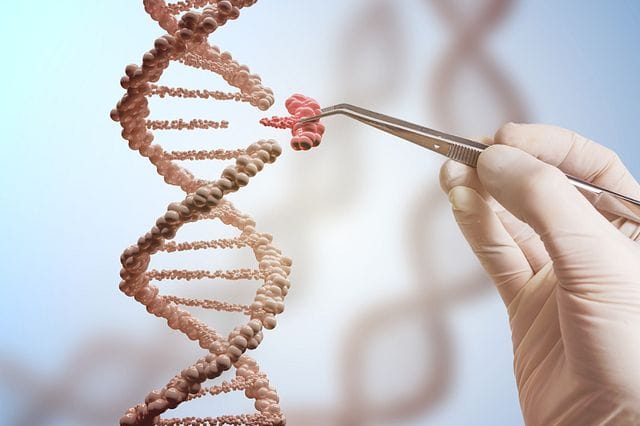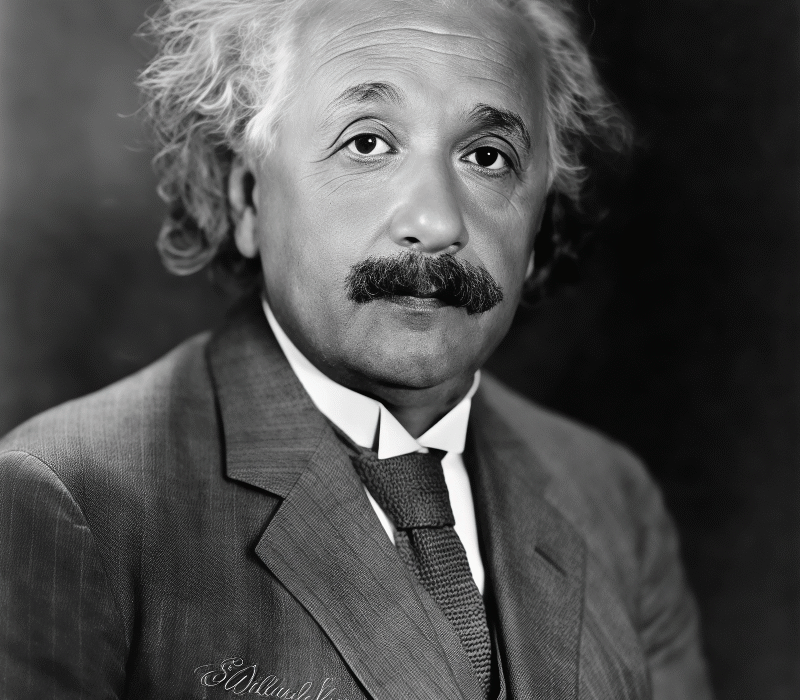In the grand story of human discovery, there are moments when knowledge leaps forward, forever altering our destiny. The double helix of DNA revealed life’s code; the sequencing of the human genome gave us its blueprint. But one discovery in the early 21st century sparked a transformation so profound that it feels as if science has placed a pen in our hands and invited us to rewrite the story of life itself. That discovery is CRISPR gene editing.
CRISPR—an acronym for “Clustered Regularly Interspaced Short Palindromic Repeats”—is more than a scientific term. It represents a key, a molecular scalpel, a way of altering DNA with an elegance and precision once thought impossible. At its heart, CRISPR is about control: control over mutations, diseases, and even evolution. But it is also about responsibility, for with such power comes consequences that reach far beyond laboratories.
To understand CRISPR is to understand both the beauty and fragility of life. It is a tale of bacteria fighting for survival, of scientists seeing patterns in chaos, and of a future where humanity holds the tools to sculpt genomes. It is a story filled with hope, tension, and profound ethical questions—an unfinished chapter of human ambition.
The Origins of a Molecular Weapon
The origins of CRISPR are not in gleaming laboratories but in the invisible battleground between bacteria and viruses. Long before humans walked the Earth, bacteria were engaged in a relentless war with their greatest predators: bacteriophages, viruses that infect and destroy bacterial cells. To survive, bacteria evolved an immune system unlike any other.
When a virus invades, bacteria capture snippets of its genetic code and insert them into their own genome. These snippets are stored in special regions known as CRISPR arrays, acting as a molecular memory bank of past infections. If the same virus attacks again, the bacteria transcribe these snippets into RNA molecules. These RNAs guide specialized proteins, such as Cas9, to recognize and cut the viral DNA, neutralizing the invader with surgical precision.
What seems like a microbial curiosity is, in fact, one of nature’s most sophisticated defense mechanisms. For centuries it remained hidden, unnoticed by human science. Only in the late 20th century did researchers begin to decode its significance. They realized that CRISPR was not random DNA clutter but a structured system, a weapon of survival. What bacteria had evolved to fight viruses, humans would learn to wield for their own purposes.
The Discovery That Changed Biology
The path from microbial defense to human gene editing was not straightforward. In the 1980s, scientists first observed peculiar repeating DNA sequences in bacterial genomes. At the time, no one knew their purpose. They seemed like genetic echoes without meaning. But in the early 2000s, researchers noticed something remarkable: many of these sequences matched viral DNA. The puzzle pieces began to fall into place.
Spanish scientist Francisco Mojica was among the first to propose that CRISPR was part of an adaptive immune system in bacteria. Then, in 2012, Jennifer Doudna and Emmanuelle Charpentier published a groundbreaking paper describing how the CRISPR-Cas9 system could be harnessed to cut DNA at precise locations. It was a revelation. They showed that by designing a small piece of RNA to match any chosen DNA sequence, Cas9 could be directed to cut that sequence like a pair of molecular scissors.
This discovery transformed CRISPR from a bacterial defense mechanism into a programmable tool for gene editing. What evolution had refined for survival, humans could now adapt for innovation. In a matter of years, CRISPR went from obscure microbiology to one of the most powerful technologies in science, a leap so profound it earned Doudna and Charpentier the Nobel Prize in Chemistry in 2020.
The Mechanics of Precision
To understand the power of CRISPR, one must peer into its microscopic choreography. At its core, the CRISPR-Cas9 system consists of two parts: a guide RNA and the Cas9 protein. The guide RNA is designed to match a specific DNA sequence. Like a GPS coordinate, it leads Cas9 directly to its destination. Cas9, shaped like a complex protein machine, acts as the scissors.
When introduced into a cell, the guide RNA binds to the target DNA through base pairing, the language of nucleotides. Cas9 then makes a double-stranded cut at that precise location. The cell, sensing damage, activates its natural repair systems. It is here that scientists intervene, providing either instructions to disrupt a gene or templates to rewrite it.
Two main repair pathways exist. The first is non-homologous end joining, a rapid but error-prone process that can introduce small mutations, effectively “knocking out” a gene. The second is homology-directed repair, a more precise method in which scientists supply a template DNA strand, allowing the cell to rewrite its genome with custom changes.
This dual ability—to disrupt or to rewrite—gives CRISPR its extraordinary versatility. With it, researchers can silence harmful mutations, insert beneficial traits, or study genes in ways previously unimaginable. The simplicity of its design, the elegance of its execution, and the affordability of its tools make CRISPR not just revolutionary but accessible. Laboratories across the world, from elite universities to small startups, now wield a power once confined to imagination.
Healing at the Genetic Level
The most immediate promise of CRISPR lies in medicine. For centuries, humans have battled diseases caused by genetic mutations—cystic fibrosis, sickle cell anemia, muscular dystrophy, and thousands more. Traditional medicine treats symptoms, but CRISPR offers something radical: the possibility of fixing the root cause by rewriting the faulty DNA.
Already, clinical trials are underway. In 2019, the first patients with sickle cell disease received CRISPR-based therapies, their blood stem cells edited outside the body to produce healthy hemoglobin. Early results have been astonishing, showing durable relief from a condition once considered incurable. Similar approaches are being tested for beta-thalassemia, certain types of blindness, and rare metabolic disorders.
Beyond inherited diseases, CRISPR offers hope against viral infections. Scientists have shown that CRISPR can target and disable the DNA of viruses like HIV or hepatitis B, potentially curing infections that linger in the body for life. In cancer research, CRISPR is being used to reprogram immune cells, equipping them to better recognize and destroy tumors. Each success, though still tentative, points to a future where medicine is not about managing illness but eliminating it at its genetic root.
Transforming Agriculture and Food
The power of CRISPR is not limited to human health. Agriculture, too, stands on the brink of transformation. For millennia, humans have bred crops and livestock through selective breeding, a slow and imprecise process. CRISPR now makes it possible to accelerate and refine these changes with surgical accuracy.
Imagine wheat resistant to devastating fungal diseases, rice that thrives with less water, or tomatoes enriched with nutrients to combat malnutrition. These are not science fiction—they are already in development. In animals, CRISPR has been used to create pigs resistant to viral infections, chickens that do not transmit deadly flu strains, and cattle without horns, sparing them painful removal procedures.
The implications extend to food security and climate change. As populations grow and climates shift, CRISPR could ensure sustainable agriculture, reducing reliance on pesticides and fertilizers while increasing yields. It holds the potential to feed billions while lightening humanity’s footprint on the planet.
Ethical Storms on the Horizon
Yet with such power comes profound responsibility. Gene editing touches the essence of life, and its consequences ripple across generations. The same technology that can cure disease can also alter traits, enhance abilities, or reshape species. Where should humanity draw the line?
The world confronted these questions in 2018 when Chinese scientist He Jiankui announced he had edited the genomes of twin girls to make them resistant to HIV. The revelation provoked global outrage. The experiment was widely condemned as reckless, unethical, and premature. The scientific community agreed: while CRISPR may one day be used to edit embryos safely, society must first grapple with its moral and societal implications.
The debate centers on the difference between therapy and enhancement. Editing somatic cells—those in the body but not passed to offspring—offers treatments for individuals without altering future generations. Editing germline cells or embryos, however, changes the human lineage forever. Do we dare to rewrite evolution? Do we risk creating inequalities between those who can afford enhancements and those who cannot?
Beyond humans, ecological concerns arise. Releasing CRISPR-modified organisms into the wild could reshape ecosystems in unpredictable ways. Proposals to use CRISPR-based “gene drives” to eliminate malaria-carrying mosquitoes raise hope for saving millions of lives but also fears of unintended consequences. Once unleashed, such changes may be irreversible.
These dilemmas do not diminish CRISPR’s potential—they amplify its importance. The future of gene editing depends not only on scientific innovation but on ethical wisdom, public dialogue, and global cooperation.
The Expanding Toolbox
While CRISPR-Cas9 is the most famous system, the technology is evolving rapidly. Researchers have discovered new Cas proteins with unique properties: Cas12, Cas13, and beyond. Some target single-stranded RNA instead of DNA, opening possibilities for treating diseases at the level of gene expression. Others are smaller, making them easier to deliver into cells.
Innovations like base editing and prime editing push the boundaries of precision. Base editors allow single-letter changes in DNA without cutting both strands, reducing the risk of errors. Prime editing, introduced in 2019, acts like a “search and replace” function, enabling scientists to rewrite DNA sequences with remarkable accuracy. These tools expand the reach of CRISPR, making it more versatile, safer, and more powerful.
Each new development refines the dream: a toolkit for rewriting life with precision, flexibility, and control. The story of CRISPR is not static—it is evolving as rapidly as the science it embodies.
What Comes Next
The future of CRISPR stretches far beyond medicine and agriculture. It could redefine conservation by rescuing endangered species or reviving lost ones. It could create biofuels from engineered microbes, cleaning energy production. It could even prepare humanity for space exploration, by engineering crops and microbes to sustain life on distant planets.
But perhaps the most profound next step is societal, not technical. As CRISPR advances, humanity faces a choice: to wield this power wisely, inclusively, and ethically, or to risk misuse and division. International guidelines, public debates, and transparent governance will shape how far we go. The promise of CRISPR is immense, but so is the responsibility it demands.
Albert Einstein once warned that our technology must never outpace our humanity. With CRISPR, that warning echoes louder than ever. This is not merely a tool for scientists; it is a mirror reflecting who we are and who we choose to become.
The Legacy We Are Writing
CRISPR gene editing is more than a scientific achievement. It is a turning point in the history of life. For the first time, humanity holds the ability to rewrite the script of biology itself. We stand on the threshold of a future where diseases can be cured, crops can flourish, and species can be saved. Yet we also face the weight of choices that will echo across generations.
The story of CRISPR is still unfolding. It began in the struggles of bacteria, passed through the brilliance of discovery, and now rests in human hands. How we choose to use it will define not only the future of science but the very trajectory of life on Earth.
The question is no longer whether we can rewrite life, but how—and why—we will do so. The answer will determine the legacy of CRISPR, a legacy not written in stone but in the living code of DNA, in the very essence of what it means to be alive.






